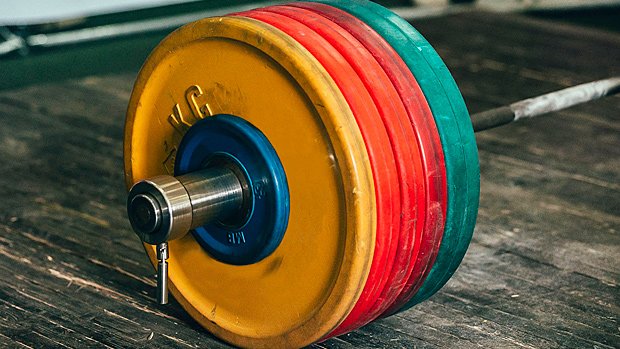There's an old sage in every gym that'll relay the secret of muscle-building to the young lifters. You've probably heard it: "You don't grow muscle in the gym. You grow muscle outside the gym."
The wisdom behind this time-tested advice comes from a fundamental understanding of the muscle-building process: a healthy balance of breaking down and rebuilding, training and recovery.
When we train, we break down muscle, and that sets off a natural process of repair that'll result in muscle growth. We engage in a short period of intense stress in order to send the signal to our body that it needs to reinforce that area while it's in the recovery state – the time when growth actually occurs.
We show up to the gym and attack our workouts like warriors. Then, after the workout's done, we toss back our post-workout protein shake, take a shower, and try to eat and sleep for growth.
But is it really this simple? Does the human body really switch from the muscle-stressing state to the muscle-building state just as soon as we finish our workout?
It's likely that you're sending the wrong signals to your body, ones which indicate that you're not actually ready to grow.
You read that right. And even after you get in your car and begin the rest of your day, it's likely that your body is still stuck in that stressed state rather than the recover-and-grow state you want to be in.
These states are governed by the autonomic nervous system (ANS), an ancient and fundamental governor of everything from your hormones, to your digestion, to your heart rate, and just about everything else that occurs in your body without you thinking about it.
So, let's take a trip back to the days of ancient mankind, long before barbells and dumbbells. I don't know what you do for a living, but where we're going there are only two professions: hunter and gatherer. The pay is not dying, and the survival of the human species lies squarely on your shoulders. No pressure!
To help with your task, you're equipped with many automatic physiological systems, governed by your ANS. This means that your vital bodily functions are done without you having to think about it at all. And this is a great thing! It frees your conscious mind to navigate the world around you without having to remember to do things like beat your heart or digest your food.

When you leave the safety of your cave in the morning, you're instantly in a situation where you're either trying to find something to kill and eat or, inversely, getting away from something trying to kill and eat you.
This is when the ANS naturally switches to the sympathetic side, most associated with the "fight or flight" state. In this state, your breathing speeds up, your blood glucose levels rise, your heart rate increases, circulation shifts away from your digestive system to your muscles, and your reproductive organs are deactivated.
Basically, your autonomic nervous system is switching off systems that you don't need and activating systems that you do.
When the hunt is done and you've got your Fred Flintstone-style wooly mammoth ribs, you return to your cave, the place of safety. Your heart rate and breathing slow down, your blood glucose reduces, and your digestive system comes back online.
Perhaps you met a special someone out there at the mammoth hunt, and you're now poised to use your reproductive organs! All these things function now because your autonomic nervous system has switched to a parasympathetic state, also known as the "rest and digest" state.
This is the state where your body can use the food you've eaten to repair the tissue you used. It happens naturally for you as a caveman. It does this because your environment has changed. You're in a safe place where your body can recover and grow.
What a great day to be an ancient human! Your autonomic nervous system is perfectly evolved to the life you live, filling you with energy and power when you're in danger, and allowing you to digest, heal, grow, and relax when you're in a safe place.
Modern life has completely changed, but your body? It's the same make and model as your ancient ancestors'. It expects outside stimuli (like a tiger) to get it into a state of fight or flight, and outside stimuli (like the safety of your cave) to get into the state of rest and digest. But we don't have those same stimuli in the modern age, do we?
No, today we're constantly put into a state of fight or flight by things like traffic, deadlines, arguments with strangers on the internet, the news, job interviews, and all the other stressors that modern life brings. We even invite the outside world into our bedrooms with these amazing modern devices called smart phones.
Psychologically, all these things put us into the same state as having to run from a predator. That article you read about a coming recession was just like inviting a tiger into your cave.
Therefore, the sympathetic nervous system is activated habitually, putting us into a habitual "fight or flight" state rather than the parasympathetic state that we need to have active in order to promote recovery and growth.
And this is how we live our day. It's no wonder we're exhausted by the time we get off work and go to the gym. So, what do we do? We take a pre-workout stimulant and chemically induce a heightened state of fight or flight.
I'm not saying we should never do this. We have to get through the workouts; but too much caffeine and the stress from the day keep you from being able to fully benefit from the parasympathetic rest and digest state that we depend on for muscle growth.
So instead of being in a growth state the whole day (except for the time we're lifting in the gym), we're in a stress state most of the day. Then we work out.
And when we finish those workouts, our bodies are still processing the caffeine, possibly for hours after. This means that, no matter how good your protein shake, no matter how perfect your diet, if your body is not in the right state to digest and utilize it, you're not really getting the maximum benefits that you could be getting if you were in a rest and digest state.
So how do we get this under control? How do we adapt our caveman bodies to 21st century life?
Well, you might be surprised to know that you can take top-down control of your state with conscious breathing. Yes, the way you breathe sends signals to your autonomic nervous system. By changing your breathing, you can change your state.
This means you can change your state from fight or flight, a naturally catabolic state, to a state of rest and digest – a naturally anabolic state – by using breathing exercises designed for such an effect.
Try the breathing exercise below. Use it at the end of every workout before you hit the showers. It normally takes about five minutes, but you can continue for up to 10 minutes to be sure that you're getting the maximum effect.
- Find a place to lay down near a wall. With knees bent at a 90-degree angle, rest your feet on the wall. (A plyo box would work too. You just want to have your spine in a neutral position.) Close your eyes, put on some calm and relaxing music if you can, and focus only on your breathing.
- Using nasal breathing, focus on lengthening your breaths, bringing them down to the belly. Avoid chest breathing. Just slow breathing through your nose.
- Begin controlling your breaths. Each inhale should be four seconds, and each exhale should be eight seconds. This will take some practice, but with time, this should be a relaxing exercise.
- Continue this breathing pattern for five minutes: inhale for four seconds through the nose, exhale for eight seconds through the nose. (Exhaling through the mouth is fine too, but you always want to inhale through the nose.)
Ideally, your heart rate will return to your resting heart rate and you should feel a sense of calm, which signifies that you're no longer in a state of fight or flight and you are now in a state of rest and digest.
Once you're done, shower up, drink your protein shake, and enjoy knowing that you've told your inner caveman that you're out of danger and ready to repair and grow.
Also, be mindful of your state throughout the rest of the day as well. Do you find yourself breathing through your mouth and into your chest like you're about to get into a fight?
If so, take a deep breath, relax, and go back into the breathing exercise described above. Take control of your state to get the full benefits of all the hard work you put into your workouts.





